Using an Inkjet Printer to Create a Souvenir Pillow
by kcli in Living > Decorating
12543 Views, 127 Favorites, 0 Comments
Using an Inkjet Printer to Create a Souvenir Pillow
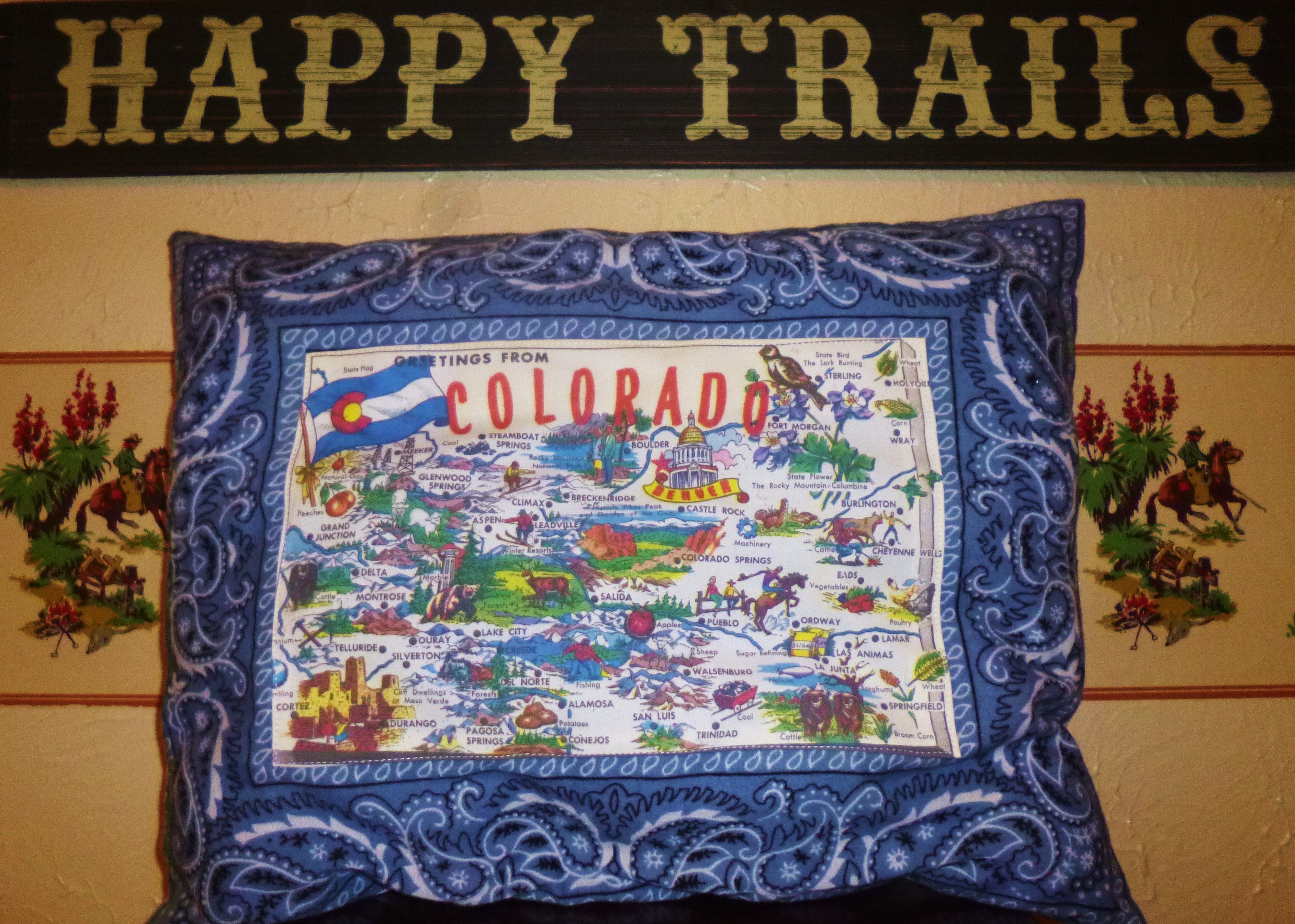
A friend is moving out of state and to remind her of what she's leaving behind, I created a vintage style pillow based on a Colorado souvenir postcard, using freezer paper and my inkjet printer.
Follow me as I show you how to create a one-of-a-kind going away gift.
Follow me as I show you how to create a one-of-a-kind going away gift.
Gather Materials
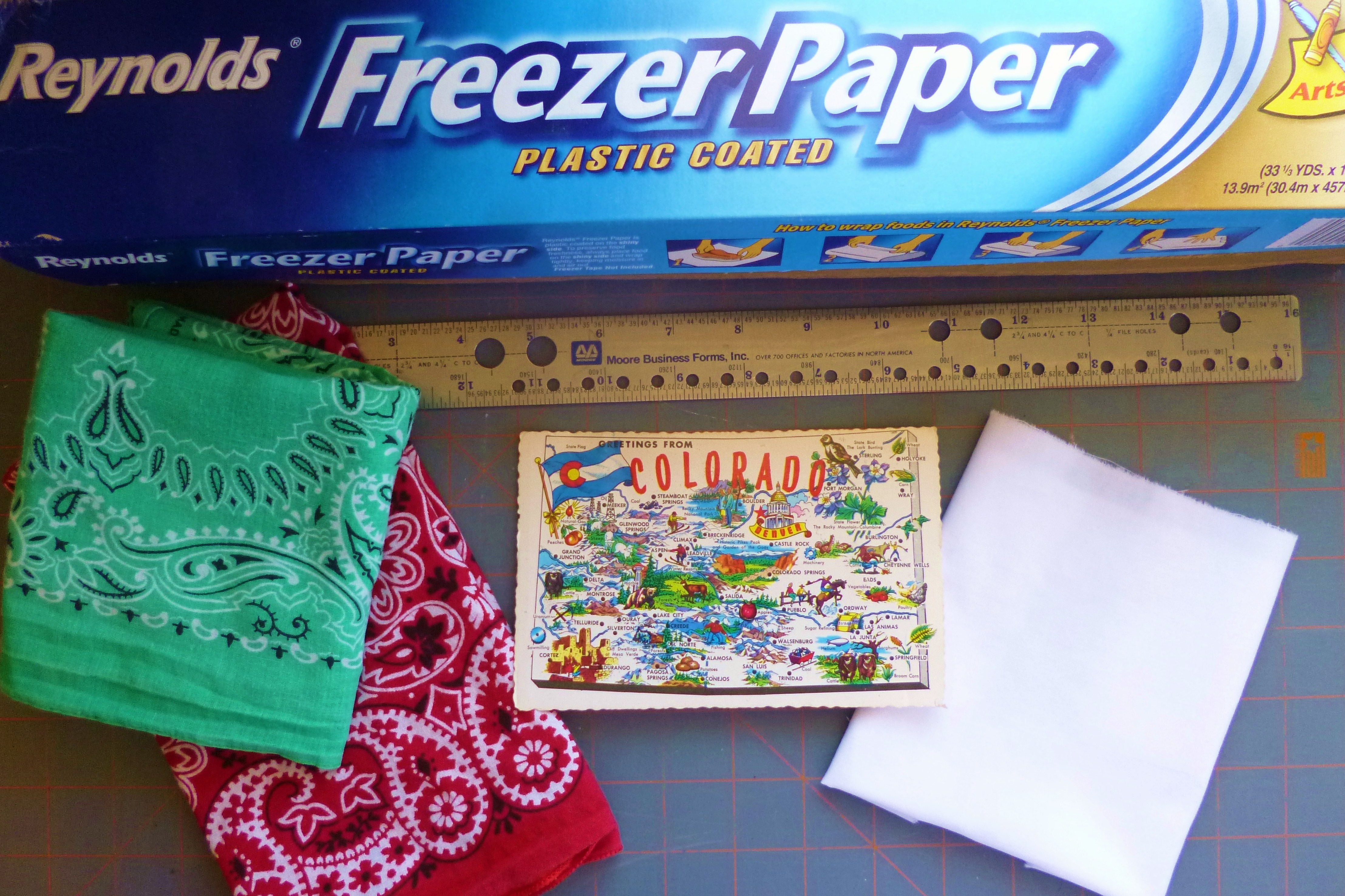
Printing on Fabric requires:
- An Image
- Freezer Paper (not waxed paper)
- Ruler
- 1/2 yard White Cotton Fabric - I used fabric from a white sheet
- Access to an Inkjet Printer
- Basic Sewing Skills and supplies
Create "Fabric Paper"
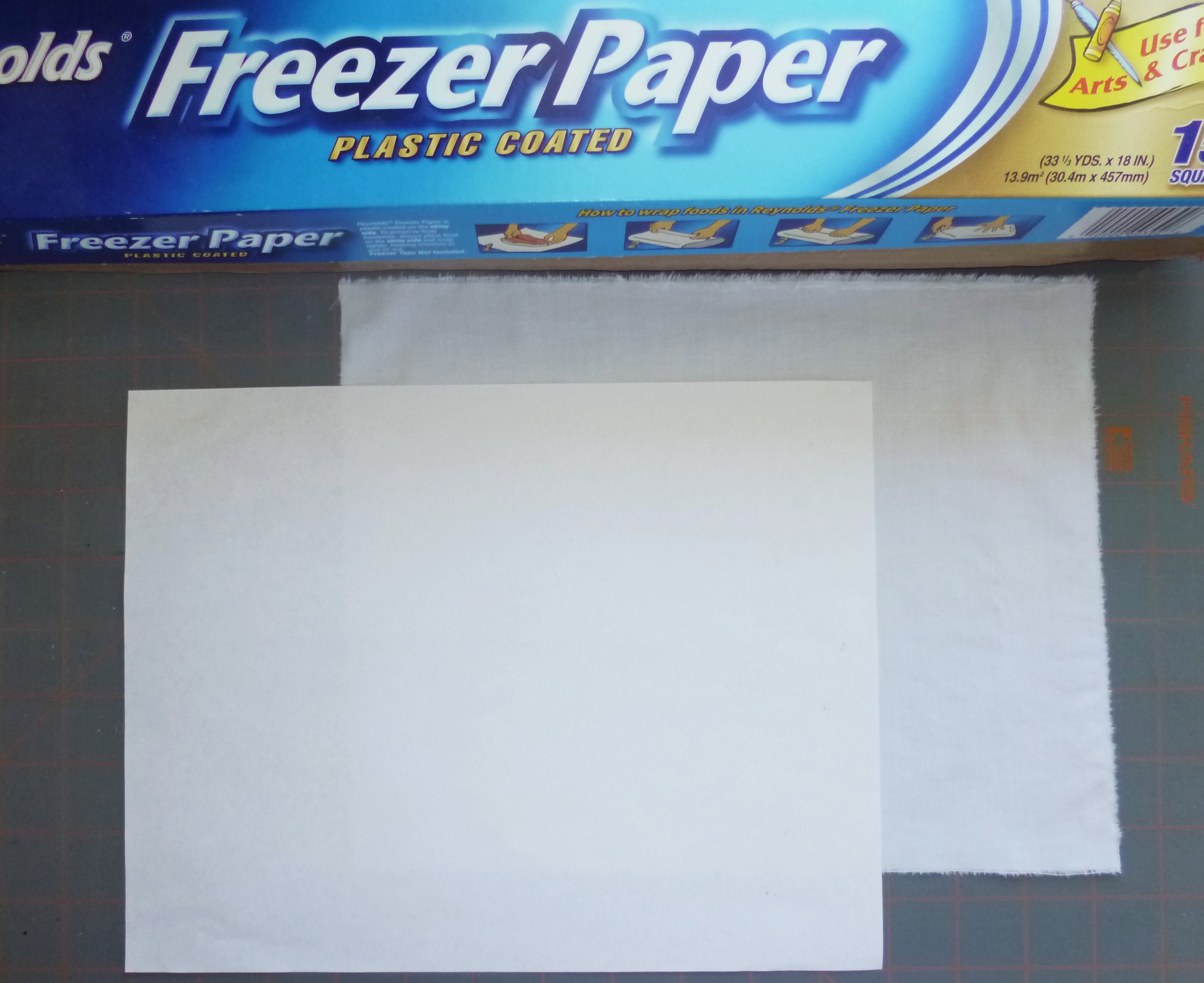
Freezer paper is sold at most grocery stores in the foil/plastic wrap aisle. Technically it is used to wrap cuts of meat and is different from butcher paper as it has a waxy /shiny surface on one side and plain paper on the other side. (It is NOT the same as wax paper.)
Using a ruler, cut several sheets of freezer paper the same size as a piece of printer paper, or 8.5" x 11".
Likewise, cut several sheets of fabric to measure 8.5" x 11".
Place a piece of the cut fabric on the waxy/shiny surface of the cut freezer paper.
Using a dry iron set at medium high, press the fabric/freezer paper together for 5-10 seconds Lift the iron and move to another section of the fabric/freezer paper and repeat. Once cooled the fabric/freezer paper will resemble bonded "fabric paper". (If the two are not bonded together, try pressing again but on a flat, protected surface - rather than a padded ironing board)
Check for stray threads and trim any fabric that hasn't bonded to the "fabric paper" so that the loose ends don't jam up the printer.
Depending on how paper is fed through your printer* place the "fabric paper" in the paper tray of the printer.
*with my HP Officejet Pro, the fabric side of the paper needs to face up. If you are not sure about your printer, place a mark on the top sheet of paper in the paper tray and copy something. If your printed output has the same mark on it, then you will need to insert "fabric paper" with the fabric side facing up.
Using a ruler, cut several sheets of freezer paper the same size as a piece of printer paper, or 8.5" x 11".
Likewise, cut several sheets of fabric to measure 8.5" x 11".
Place a piece of the cut fabric on the waxy/shiny surface of the cut freezer paper.
Using a dry iron set at medium high, press the fabric/freezer paper together for 5-10 seconds Lift the iron and move to another section of the fabric/freezer paper and repeat. Once cooled the fabric/freezer paper will resemble bonded "fabric paper". (If the two are not bonded together, try pressing again but on a flat, protected surface - rather than a padded ironing board)
Check for stray threads and trim any fabric that hasn't bonded to the "fabric paper" so that the loose ends don't jam up the printer.
Depending on how paper is fed through your printer* place the "fabric paper" in the paper tray of the printer.
*with my HP Officejet Pro, the fabric side of the paper needs to face up. If you are not sure about your printer, place a mark on the top sheet of paper in the paper tray and copy something. If your printed output has the same mark on it, then you will need to insert "fabric paper" with the fabric side facing up.
Play With the Printer Settings...
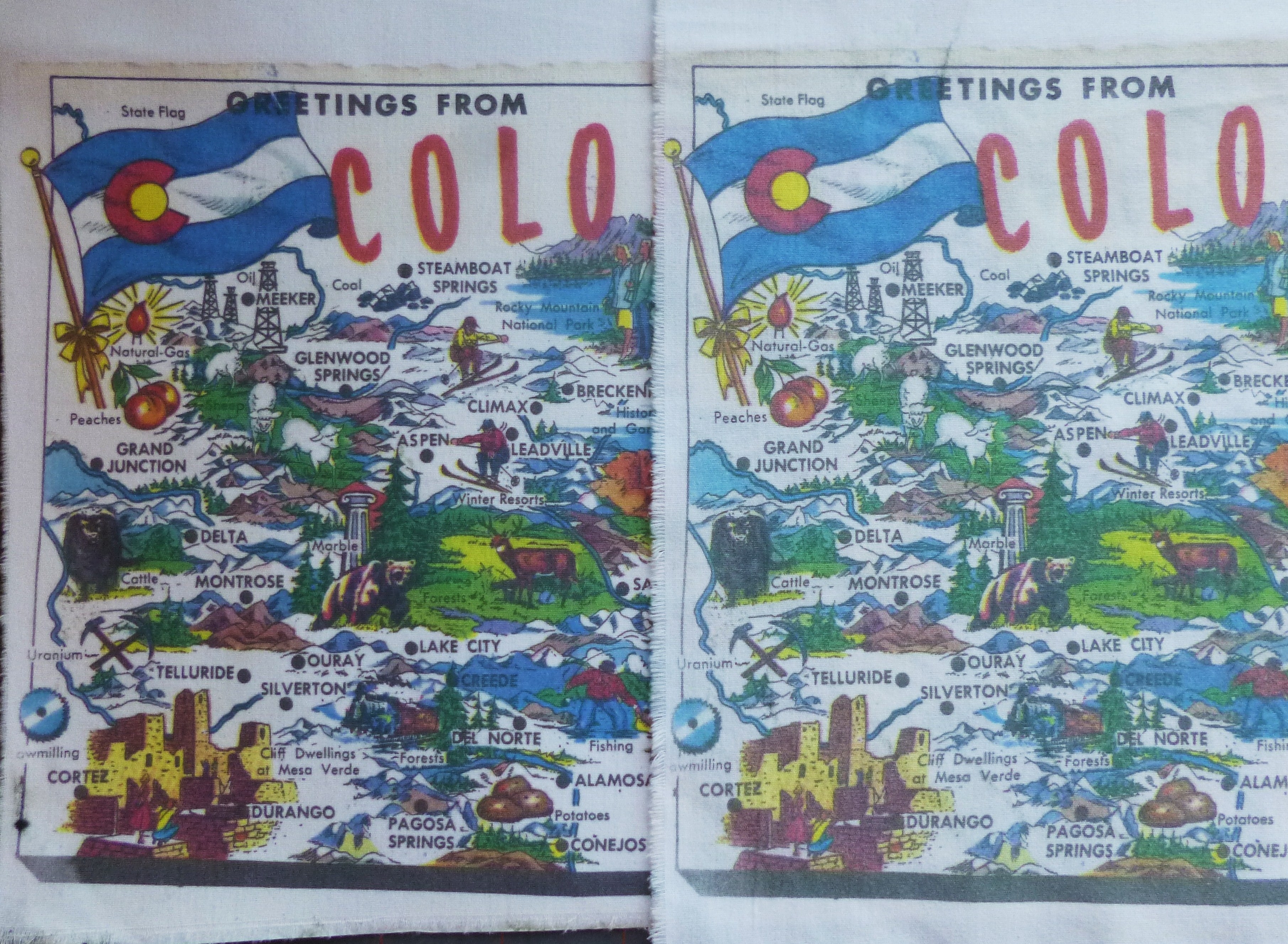
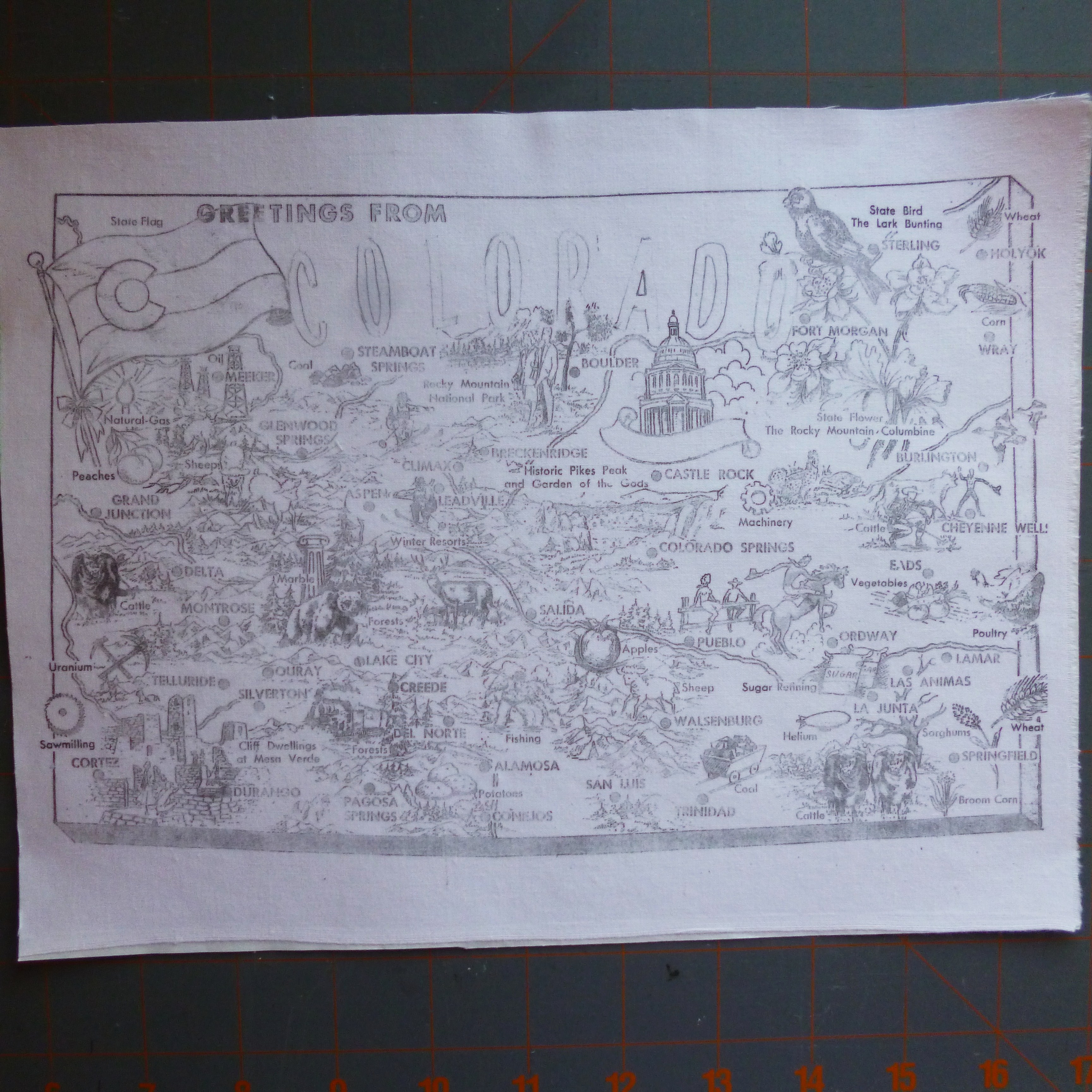
...and create "fabric paper" samples until you achieve the effect you are after. Not all printers provide the same quality resolution and not all inkjet inks are colorfast and so you'll need to experiment with your printer settings and understand how to load your "fabric paper" for best results
For instance a postcard measuring 4" x 6", requires enlargement to approximately 185%, and may need to be taped to a sheet of white paper behind it if the printer is sensitive. Whether you want a black and white image or color, adjustments to lightness/darkness may be necessary. Likewise, many printers have additional quality settings such as best, normal, and draft...
Once samples are made, remove the paper backing from the "fabric paper" and wash the samples in cold water to determine if the ink is going to bleed, fade or disappear*. Likewise, after washing determine if additional adjustments are needed for your final output.
*There are products on the market that prevent this from happening but because I wanted a faded, vintage feel, no further adjustments were necessary and so they were not included in this Instructable.
For instance a postcard measuring 4" x 6", requires enlargement to approximately 185%, and may need to be taped to a sheet of white paper behind it if the printer is sensitive. Whether you want a black and white image or color, adjustments to lightness/darkness may be necessary. Likewise, many printers have additional quality settings such as best, normal, and draft...
Once samples are made, remove the paper backing from the "fabric paper" and wash the samples in cold water to determine if the ink is going to bleed, fade or disappear*. Likewise, after washing determine if additional adjustments are needed for your final output.
*There are products on the market that prevent this from happening but because I wanted a faded, vintage feel, no further adjustments were necessary and so they were not included in this Instructable.
Stitch Printed Image to a Larger Background
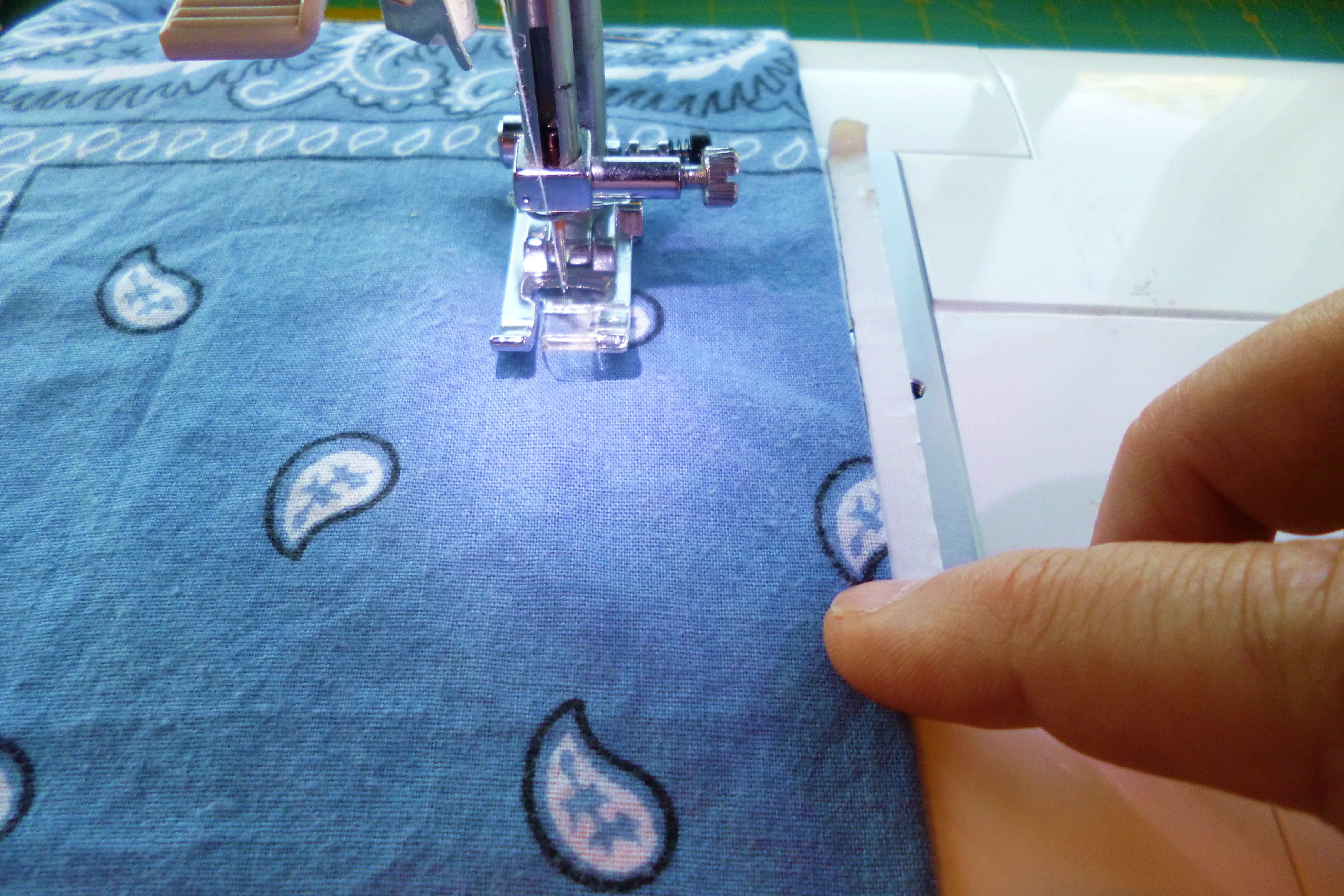
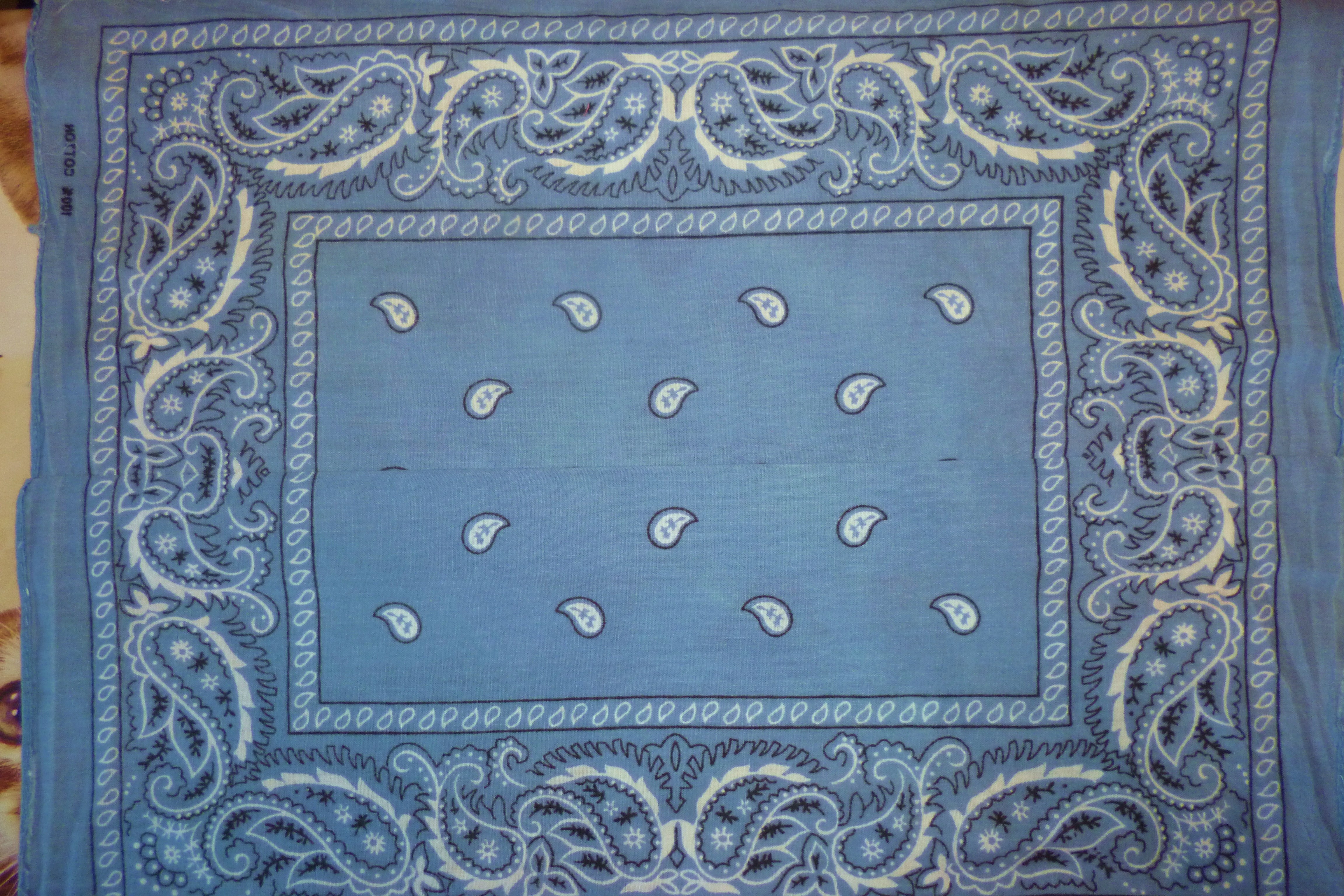
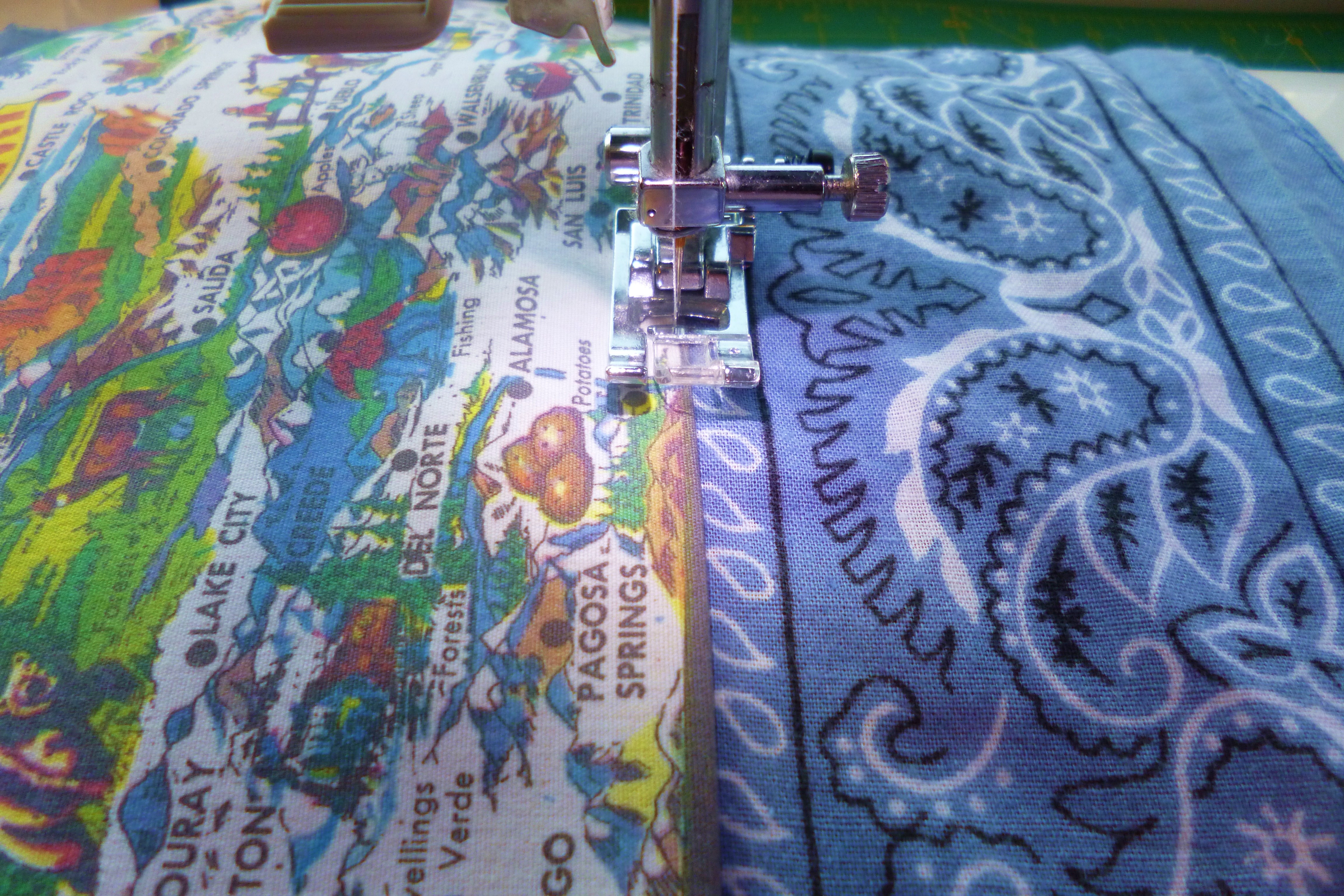
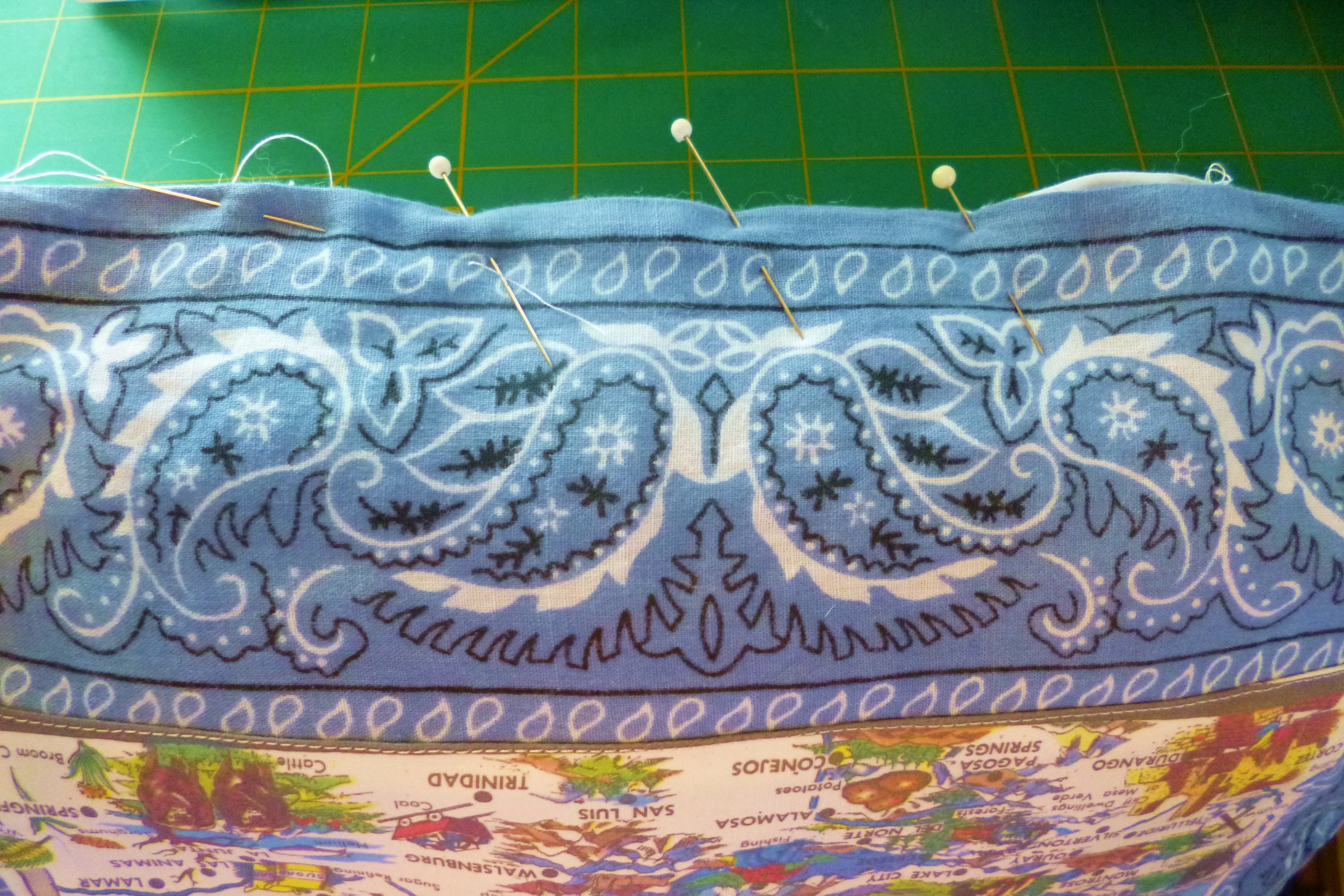
I wanted my printed image to be centered on a pillow, and since it measured 8.5" x 11", I created a pillow by framing the printed image onto a larger background using a standard bandana (18"x18"). The back of the pillow is made from white fabric of approximately the same size.
After pressing a bandana in half, I stitch 1.5" across this center line. This resulted in the front of the pillow measuring apx 15" x 18".
The raw edges of the printed image were pressed under, centered on to this front/bandana side of the pillow, pinned and topsitched.
A piece of white fabric measuring 15" x 18" was cut for the back of the pillow and placed against the topstitched image, so the two are facing each other.
After applying a 1/2" stitch around all but 4" of the perimeter, the pillow was turned inside out and filled with polyfill. The opening edge was pinned and hand stitch closed.
After pressing a bandana in half, I stitch 1.5" across this center line. This resulted in the front of the pillow measuring apx 15" x 18".
The raw edges of the printed image were pressed under, centered on to this front/bandana side of the pillow, pinned and topsitched.
A piece of white fabric measuring 15" x 18" was cut for the back of the pillow and placed against the topstitched image, so the two are facing each other.
After applying a 1/2" stitch around all but 4" of the perimeter, the pillow was turned inside out and filled with polyfill. The opening edge was pinned and hand stitch closed.
Goodbye Friend?
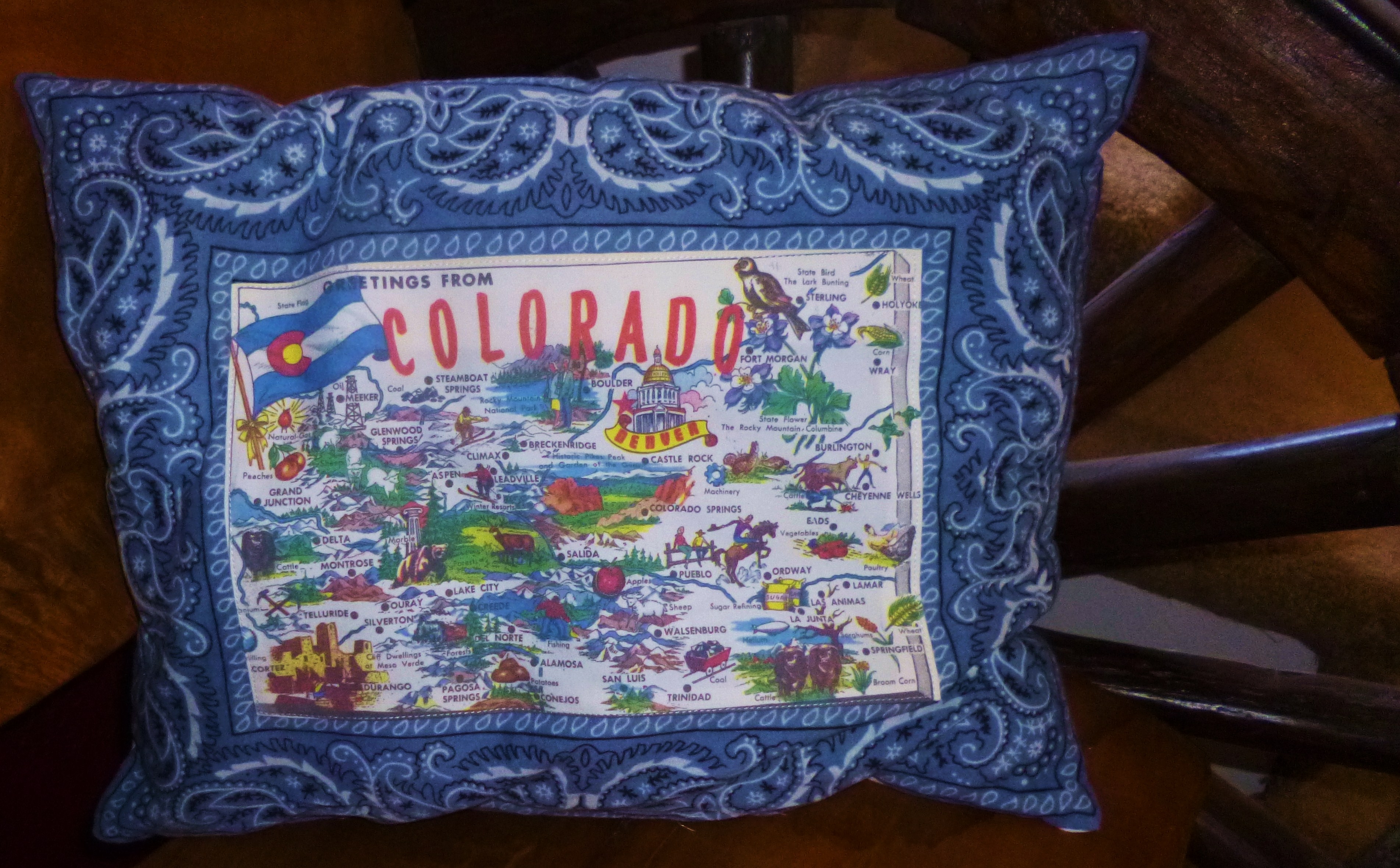
While I made this for a friend, l gotta convince her not to move, or make another for myself because it looks sooo good in my den!